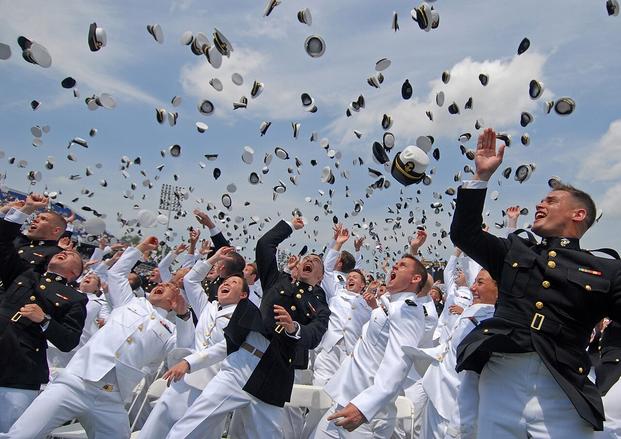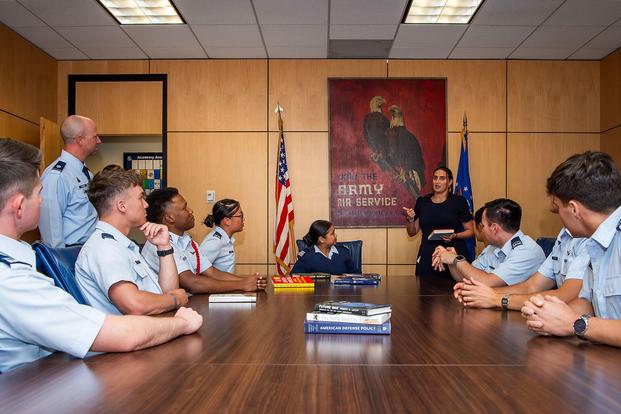Every military service academy in the United States exists for one reason: to produce leaders of character who can fight and win the nation’s wars. Everything that happens at West Point, Annapolis, and Colorado Springs, from admissions to athletics to academics, should reinforce that purpose.
Yet conversations about who teaches the future officer corps too often get bogged down in numbers: 50% civilian here, 30% there, 70% military somewhere else. Those ratios might satisfy spreadsheets, but they miss the point. The real issue isn’t how many civilians or officers stand at the lectern. It’s whether the people teaching are aligned with the mission of developing competent, ethical, and adaptable leaders. I say this not from a distance, but from over 10 years of experience as a senior faculty member at the United States Air Force Academy.
Mission First, Faculty Follows
Each academy has its own operational focus and educational flavor. West Point molds officers ready to lead in complex ground environments. Annapolis (United States Naval Academy) trains leaders who can make independent decisions at sea and under pressure. The Air Force Academy develops officers who think across air, space, and cyber domains where both precision and moral judgment are critical.
That variety of missions calls for different instructional approaches. A physics course at the Air Force Academy should connect equations to satellite trajectories and weapons systems. A political science seminar at West Point should link theory to governance in unstable regions. A leadership lab at Annapolis must tie seamanship to ethical command.
The key is not who teaches, but how the teaching supports the specific warfighting purpose. Faculty composition, whether it is civilian or military, must flow from that intent.

What Civilian Faculty Bring to the Mission
Civilian educators provide much of the intellectual horsepower and continuity that keep the academies academically rigorous.
Depth and stability. Civilians, many with doctorates and research experience, give the institutions consistency. They sustain curriculum development, maintain research labs, and ensure academic programs meet long-term standards, even as military faculty often rotate every few years.
Intellectual discipline. A good officer must know how to challenge assumptions, weigh evidence, and think critically under stress. Civilian professors can help cultivate that mindset. They model inquiry, structured argument, and analytical reasoning which are the foundation of sound decision-making in any domain.
Perspective beyond the gate. Civilian faculty come from diverse professional and cultural backgrounds. They broaden cadets’ understanding of the world they’ll operate in, helping them lead more effectively in multinational, interagency, and cross-cultural environments.

What Military Faculty Contribute
Uniformed instructors and professors bring the operational realism and lived experience that tie the classroom to the mission.
Real-world credibility. Cadets listen differently when a major or commander speaks from firsthand experience, from combat deployments, operational leadership, or command responsibility. Those insights make lessons tangible and relevant.
Professional modeling. Military faculty embody the standards, discipline, and values of the profession of arms. Their presence demonstrates what integrity, accountability, and composure look like in practice. Traits no textbook can teach.
Operational relevance. Rotating officers bring current doctrine, emerging technologies, and real-time lessons from the field. Their voices ensure the curriculum remains tied to the force’s present and future realities.

The Real Issue: Alignment, Not Arithmetic
The academies don’t need matching ratios of military to civilian faculty. Instead, they need intentional alignment, which consists of a clear understanding of how each position serves the mission. Too often, staffing decisions are driven by budget categories, personnel pipelines, or accreditation checklists instead of intentional strategic design.
A better approach starts with one question: What competencies must every graduate demonstrate on day one of active duty? Once that’s defined, faculty composition should flow backward from those desired outcomes.
- If the mission requires adaptive problem-solvers (which it does), you need professors who specialize in systems thinking and analytical reasoning.
- If it calls for ethical warriors, you need officers who model judgment, resilience, and leadership in uncertainty.
- If it demands technological edge, you need both scholars and practitioners working together to link science to application.
The numbers only matter if they advance those ends.
Building a Mission-Driven Faculty
1. Start with mission outcomes.
Every academy should define the intellectual, moral, and operational competencies it expects from graduates. Those expectations, not tradition or convenience, should shape hiring and development.
2. Pair expertise.
Blend strengths that both civilian and military faculty can bring. For example, a leadership course co-taught by a behavioral scientist and a combat arms officer can bridge theory and practice in a deeper and more meaningful way than either alone.
3. Invest in both groups.
Give military instructors professional teaching development, and give civilian faculty operational exposure. This can include things such as base visits, ship rides, and joint exercises. Both need to understand the world they’re preparing cadets for.
4. Protect academic freedom within mission limits.
Healthy debate strengthens institutions. Civilian and military faculty alike should be able to question ideas and assumptions, provided it enhance readiness and reinforce the mission.
5. Measure outcomes, not ratios.
Success should be judged by how graduates think, decide, and lead, and not by the percentage of civilians on the payroll.

Refocusing the Conversation
Civilian professors aren’t a threat to military culture, and uniformed instructors aren’t relics of tradition. Both are vital. The service academies aren’t universities with uniforms, nor are they military bases with classrooms. They are leadership crucibles designed to forge intellect, integrity, and action.
The real question isn’t, What’s the right ratio of civilian to military faculty?
It’s, How do we ensure every instructor, regardless of attire, helps produce officers ready for the moral, intellectual, and operational challenges of 21st-century warfare?
That’s not about balance. It’s about mission.















